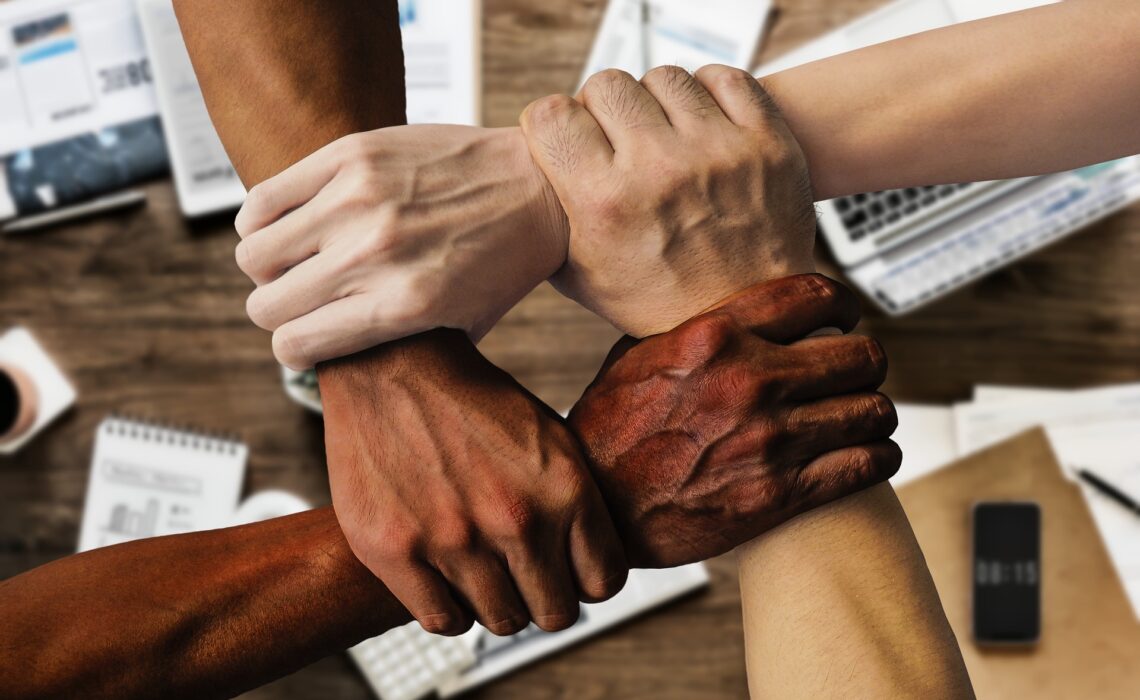
As a society, we’re becoming more and more open and respectful about our differences as people. While there’s a lot that makes us similar, we also bring so much diversity as a species. That’s something to be celebrated—and something your next event can (and should!) reflect. When you make your event more inclusive, you make all people feel welcome, you encourage innovation, and your event will perform better, too.
For starters, diversity drives inspiration and innovation. When you have a variety of perspectives, you can see one problem from many angles. That means you’ll be able to create multiple solutions, too. Second, diverse teams perform better. When you have all those perspectives, you also have different skills, too. You can create a truly functional team. When you start planning inclusive events, you’re contributing to a more creative, functional, and safe environment.
A note about inclusivity
As you make your event more inclusive, it’s important to remember that inclusivity is a perpetual, ongoing process. These suggestions are great starting points, but diversity and inclusivity aren’t one-time occurrences. Instead, they can should apply to whole systems: your event-planning department, the company you work for, the products you sell.
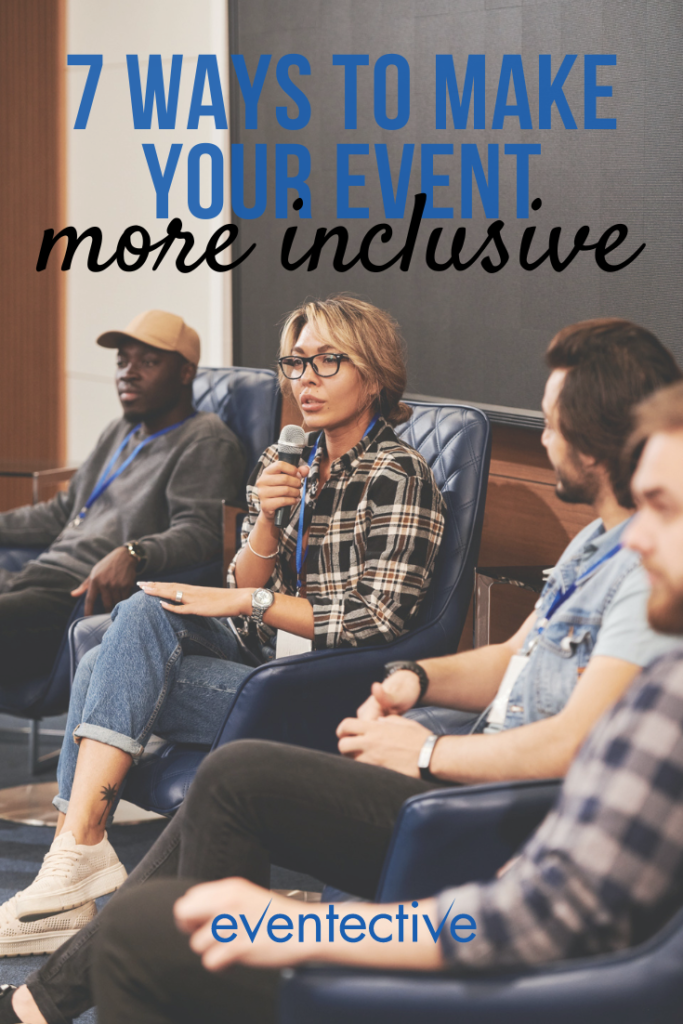
However, it can be intimidating to start with such a big goal. And as an event planner, it’s often more plausible to start with smaller changes that you can control—like your next event—and work up to the bigger, systemic changes in the systems you’re a part of. (Unless you’re reading this as an executive or other person in power; then, you can and should do something!) So here are seven ways to make your event more inclusive and diverse. If you can do them all, fantastic! But it’s also okay to start with one or two and work up from there.
1. Choose diverse speakers (for real)
No, we’re not talking about adding a single woman on an otherwise all-male panel. Instead, we mean intentionally crafting a panel that represents different ages, races, backgrounds, and genders. (To name a few!) Of course, you might not get every single demographic on your stage. But it’s important to have more than just a panel of middle-aged white men sitting up there. This also applies to any other on-stage presence, like the person who introduces the speaker or hosts the event—make sure the people who are the “face” of your event don’t all have the same face.
2. Let speakers and attendees list their pronouns
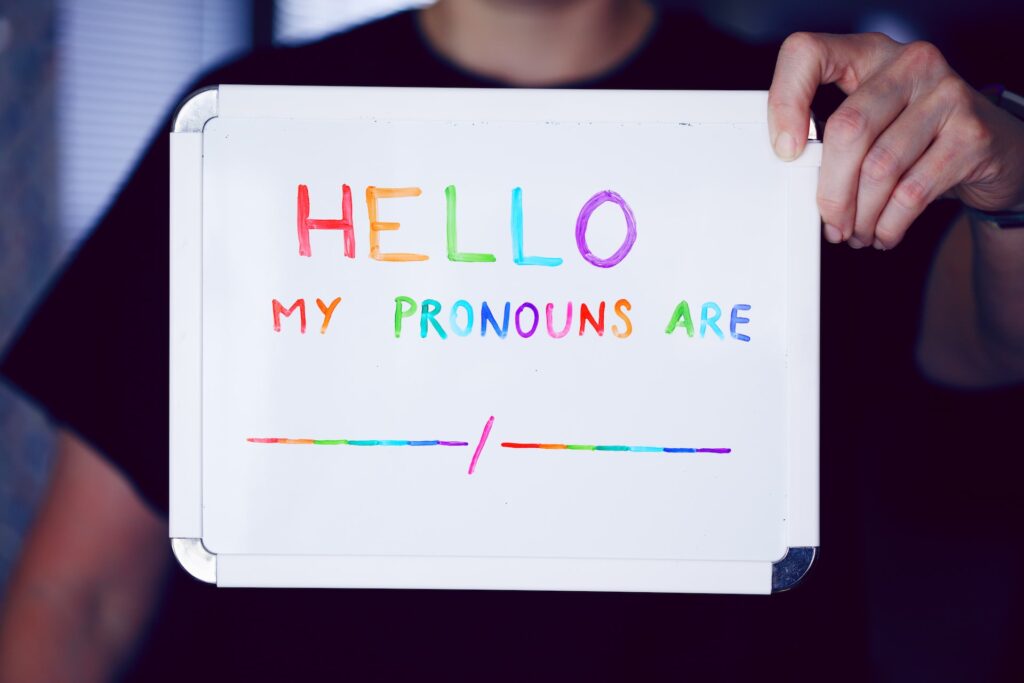
It’s easy to think about diversity in the context of race or ethnicity. But it also applies to gender identity. So, a simple way to make your event more inclusive is to give everyone the option to list their pronouns next to their names. For speakers, this could be in the program, on the website, or on their name tags. For attendees, this could be on their name tags or their profile on the event app. In short, if a speaker or attendee can write their name on it, give them the option to add their pronouns as well.
3. Partner with brands that practice inclusivity
Who is sponsoring your event? Who is exhibiting or advertising? Choose to partner with brands that practice inclusivity, not just support it. Admittedly, this is a challenging way to make your event more inclusive, because it will require some investigative work. But we did say inclusivity is an ongoing process! Plus, if you find a few diverse partners, you can always ask them who they partner with that’s also inclusive and try to build relationships that way. You can also choose inclusive companies to print your handouts, cater your meals, and market your event.
4. Book an accessible venue
If the content of your event is inclusive, but the venue itself isn’t, it’s not really an inclusive event. One of the easiest ways to make your event more inclusive is to choose an accessible venue. This includes, but certainly isn’t limited to, a venue that is wheelchair accessible, has hand bars in the restrooms, allows service dogs, and has ample disabled parking. These are all questions you can ask before booking or when you tour the facility.
5. Offer event scholarships
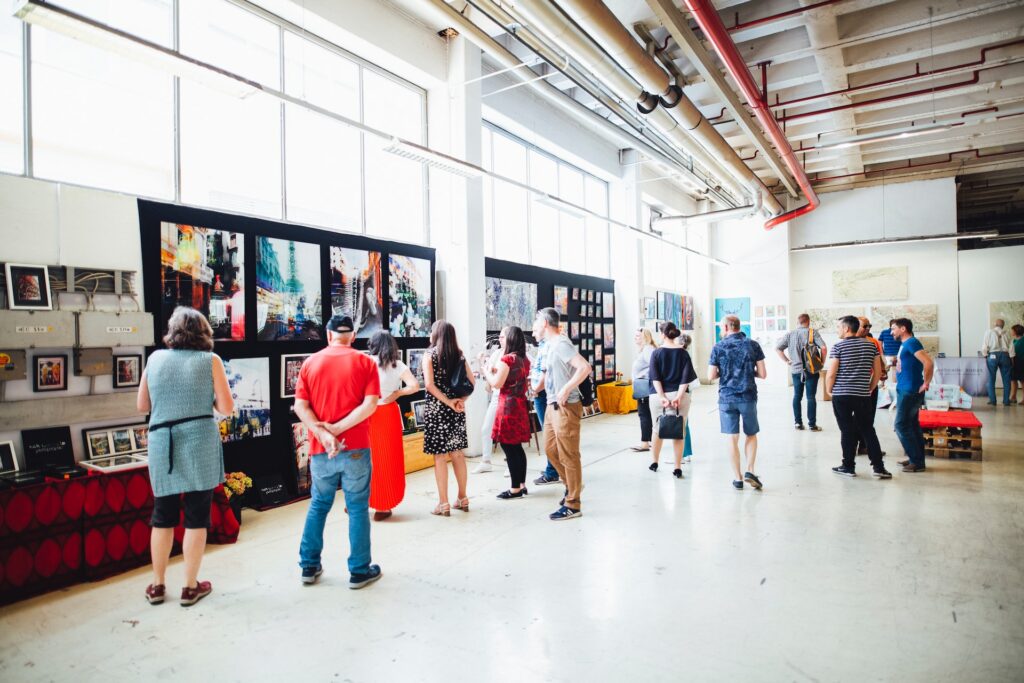
Not everyone has the financial means to attend your event. Providing event scholarships opens the event up to people who otherwise wouldn’t be able to attend. This can include ticket, travel, and/or accommodation costs. It can be done in multiple ways, too. For example, your event sponsors can also sponsor a few spots. Your attendees can also sponsor a spot, or your company can sponsor a few spots. You can also offer different ticketing options or a virtual option so attendees can pick the best financial option for themselves—instead of choosing between two high-price tickets.
6. Create an accessible website
Make sure your event website is accessible to all your readers. This includes ample white space, easy-to-read fonts and text sizes, including transcripts and video captions, and including alt text for your images. You can find out more guidelines for accessibility from the Americans with Disabilities Act (ADA) and the Web Content Accessibility Guidelines (WCAG).
7. Use diverse and inclusive graphics in your materials
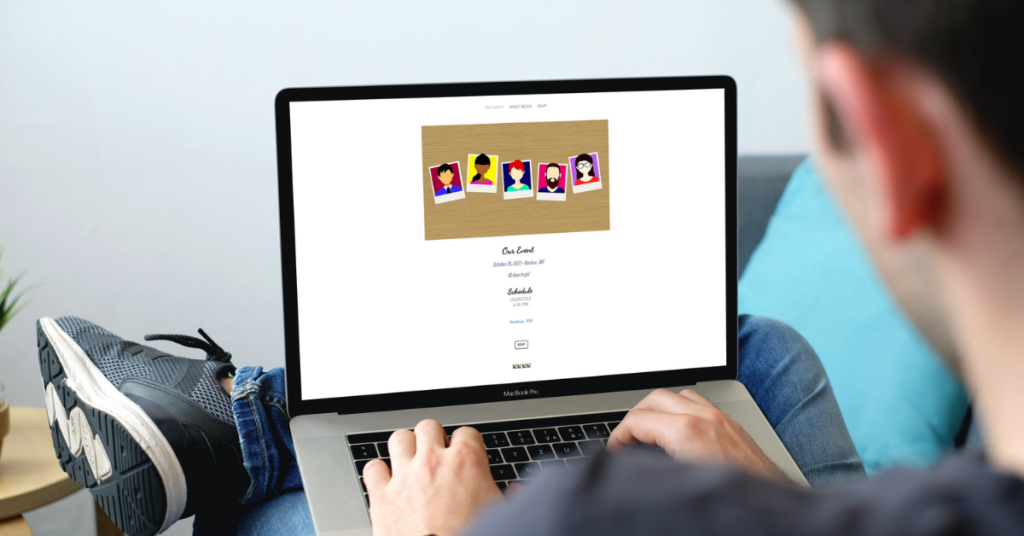
Imagery is a powerful way to communicate with your audience before they even attend your event. When you’re creating your event materials, choose images that reflect the audience you want to attract and/or images that reflect the diversity in your speakers. These inclusive images should be used everywhere: in social media campaigns, brochures, websites, and presentations. (Don’t forget alt text when you put them on the website!) In short, if you’re planning to make your event more inclusive, your graphics and materials should match that!
Conclusion
Creating an inclusive environment at your event can be overwhelming if you’re just starting out. But there are so many ways that you can foster diversity at your next event—these seven suggestions are just some starting points. We recommend choosing one or two to do really well, and adding more as you go on. If you can do more than two at your next event, that’s great! But make sure you’re focusing on doing inclusivity well instead of just checking a few items off a list.
What are some other ways an event can be inclusive? We know this isn’t an exhaustive list!

